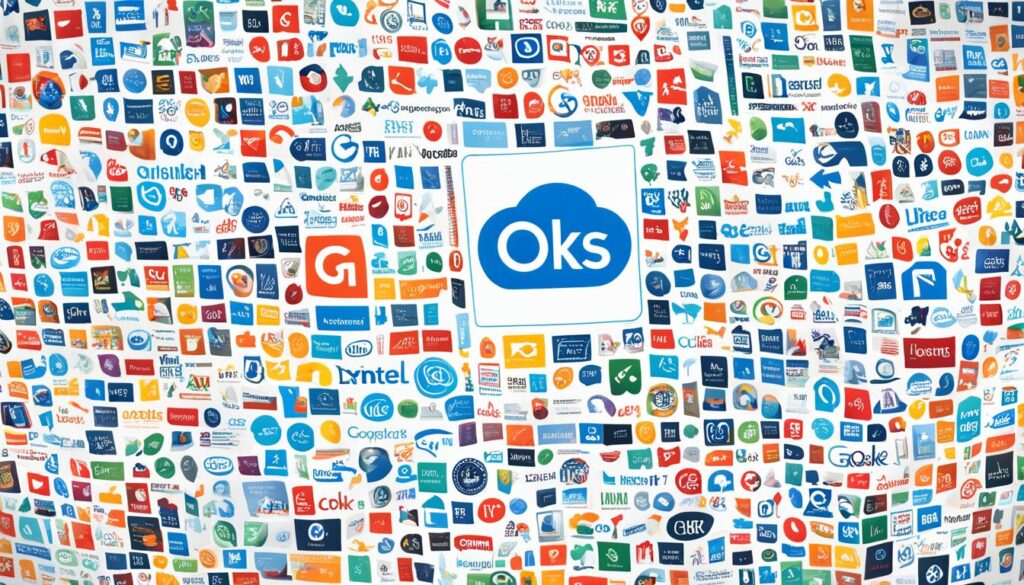Unlock Your Goals: What Are Key Results?

“The greater danger for most of us lies not in setting our aim too high and falling short, but in setting our aim too low and achieving our mark.” – Michelangelo
When it comes to goal setting, achieving success requires more than just setting objectives. It requires a clear roadmap to follow, a way to measure progress, and a focus on key results. Key results are the measurable outcomes that indicate progress toward a larger goal. They provide clarity, drive accountability, and ensure that efforts are aligned with desired outcomes.
In this article, we will explore the concept of key results and how they can help you unlock your goals. We will delve into the importance of key results in goal attainment, strategies for setting effective objectives, and best practices for implementing key results in your own goal-setting process. Let’s dive in and discover how key results can be the game-changer in achieving your goals.
Key Takeaways:
- Key results are the measurable outcomes that indicate progress toward a larger goal.
- Setting ambitious yet achievable objectives is crucial for success.
- Implementing key results requires focus, alignment, and regular check-ins.
- OKR software can help track, manage, and report on key results effectively.
- By using key results, you can unlock your goals and drive success.
Understanding OKRs: What Is OKR?
In the world of goal setting, Objectives and Key Results, commonly referred to as OKRs, have gained significant popularity. But what exactly is OKR? Let’s delve into the framework and methodology that has revolutionized the way organizations set and achieve goals.
OKR stands for Objectives and Key Results. It was first introduced at Intel in the 1970s by Andy Grove, the company’s CEO at the time. However, OKRs rose to prominence when Google implemented them and attributed their success to this goal-setting approach. Since then, OKRs have become the go-to framework for companies worldwide.
The concept behind OKRs is simple yet powerful. It involves pairing a single Objective with multiple Key Results. The Objective is the overarching goal that needs to be accomplished, while the Key Results are the measurable outcomes that determine whether the Objective has been achieved or not.
For example, a company’s Objective might be to increase customer satisfaction. The Key Results could include metrics such as customer survey ratings, net promoter score, and customer retention rate. By defining these Key Results, companies can clearly track their progress and measure the success of their efforts towards the Objective.
The OKR framework serves as a strategic compass that aligns goals with a company’s overall strategy. It ensures that everyone in the organization is working towards a common purpose and understands how their individual efforts contribute to the larger picture.
With OKRs, organizations can set ambitious yet achievable goals and break them down into measurable milestones. This methodology provides clarity and direction, eliminates ambiguity, and fosters a results-oriented culture.
Next, we will explore the importance of OKRs and why they are necessary for organizations seeking to unlock their full potential and achieve success.
The Importance of OKRs: Why Are They Necessary?
When it comes to goal-setting processes, OKRs play a vital role in driving success and achieving desired outcomes. OKRs provide three key elements that are crucial for effective goal management: alignment, clarity, and tracking.
Alignment: With OKRs, teams and individuals can align their efforts towards common objectives. By clearly defining and communicating the objectives, everyone can work together towards a shared goal. This alignment ensures that everyone is on the same page and moving in the right direction.
Clarity: OKRs bring clarity to goal-setting by providing a clear understanding of what needs to be achieved. Each Objective has multiple Key Results, which serve as measurable indicators of success. This clarity helps individuals and teams focus their efforts and prioritize tasks that directly contribute to goal attainment.
Tracking: OKRs enable effective goal tracking by providing a framework for measuring progress. Regular check-ins and updates on Key Results allow teams and individuals to monitor their performance and make necessary adjustments to stay on track. This tracking mechanism ensures accountability and enables timely course corrections if needed.
Benefits of OKRs in Performance Management
In addition to alignment, clarity, and tracking, OKRs also have a significant impact on performance management. By implementing OKRs, organizations can improve their performance management processes in the following ways:
- Improved Goal Clarity: OKRs provide a clear and well-defined structure for setting goals, ensuring that expectations are understood by all. This clarity enhances individual and team performance by aligning efforts towards the most important objectives.
- Enhanced Goal Alignment: OKRs foster goal alignment across different levels and functions of an organization. This alignment aligns individual goals with departmental objectives, which in turn align with the overall organizational strategy. When everyone is working towards the same objectives, collaboration and synergy are maximized.
- Increased Accountability: With OKRs, individuals and teams have a clear understanding of their responsibilities and the expected outcomes. This clarity fosters a sense of ownership and accountability, as progress and results are transparently tracked.
- Better Decision Making: OKRs provide organizations with valuable data and insights about goal progress. This information enables data-driven decision making, as leaders can identify trends, make informed adjustments, and allocate resources effectively.
By embracing the importance of OKRs, organizations can unlock their full potential, align their goals, and achieve remarkable success in performance management. Implementing OKRs is a strategic move towards increased focus, motivation, and collaboration, ultimately resulting in improved performance and achieving desired outcomes. So, let’s dive into the best practices for implementing OKRs and empowering your organization to reach new heights.
![]()
Implementing OKRs: Best Practices
Implementing OKRs effectively is crucial for achieving success in goal setting. By following these best practices, you can ensure that your OKRs drive focus, alignment, and results.
1. Define a Clear Purpose
Before implementing OKRs, it’s essential to have a clear purpose. Understand why you are implementing OKRs and how they align with your overall business objectives. This clarity will help guide your goal-setting process and ensure that your OKRs are meaningful and impactful.
2. Set Ambitious yet Achievable Objectives
When setting objectives for your OKRs, aim high. Set ambitious goals that challenge and inspire your teams to perform at their best. However, it’s equally important to ensure that these objectives are achievable. Strike a balance between ambition and realism to keep your teams motivated and engaged.
3. Define Measurable Key Results
Key Results are the measurable indicators of success that determine whether your objectives have been achieved. When defining your Key Results, make sure they are specific, measurable, and actionable. This will enable you to track progress effectively and assess the impact of your efforts.
4. Keep It Simple
Focus on a limited number of objectives to avoid spreading your resources too thin. By prioritizing the most critical areas, you can concentrate your efforts and achieve meaningful results. Simplicity ensures clarity and allows teams to remain focused on what truly matters.
5. Regular Check-ins and Progress Reviews
Holding regular check-ins and progress reviews is essential for staying on track with your OKRs. These meetings provide an opportunity to assess progress, discuss any challenges or roadblocks, and make necessary adjustments. Regular communication ensures that teams stay aligned and can support each other in achieving their goals.
Best Practices Summary:
- Define a clear purpose for implementing OKRs
- Set ambitious yet achievable objectives
- Define measurable key results
- Keep it simple by focusing on a limited number of objectives
- Hold regular check-ins and progress reviews

| Best Practice | Description |
|---|---|
| Define a Clear Purpose | Understanding the why behind your OKRs leads to meaningful goal-setting |
| Set Ambitious yet Achievable Objectives | Motivate teams with challenging goals that are within their reach |
| Define Measurable Key Results | Create specific, measurable indicators of success to track progress |
| Keep It Simple | Focus on a limited number of objectives to maintain clarity and effectiveness |
| Regular Check-ins and Progress Reviews | Stay aligned and make adjustments by regularly reviewing progress and addressing challenges |
The Benefits of OKRs: Why Should You Use Them?
When it comes to goal alignment, focus, transparency, and measuring progress, OKRs offer several benefits that can drive organizational success. By implementing the OKR framework, companies can achieve the following advantages:
Alignment of Teams and Individuals
OKRs provide a powerful tool for aligning teams and individuals towards common goals. By setting clear objectives and key results, everyone in the organization can work together towards a shared vision, ensuring that efforts are coordinated and progress is unified.
Increased Focus on High-Priority Objectives
OKRs help organizations prioritize their goals and focus their efforts on the most important and impactful objectives. By setting measurable key results that align with strategic priorities, teams can ensure that their work is contributing directly to the organization’s success.
Transparency in Goal-Setting and Progress Tracking
With OKRs, organizations can foster transparency in goal-setting. When objectives and key results are well-defined and communicated throughout the organization, everyone has visibility into the strategic direction of the company and understands how their work contributes to the overall goals. This transparency promotes accountability and collaboration, as teams can see how their efforts fit into the bigger picture.
Effective Measurement of Progress
Measuring progress is crucial for tracking performance and ensuring that goals are being achieved. OKRs provide a clear framework for measuring progress and success. By regularly reviewing key results and aligning them with the desired objectives, organizations can assess their progress objectively and make data-driven decisions to course-correct if needed.
Overall, the use of OKRs can drive focus, increase productivity, foster collaboration, and help organizations achieve their desired outcomes. By aligning teams, providing clarity, promoting transparency, and enabling effective progress measurement, OKRs empower organizations to unlock their goals and drive success.
Real-World Examples: Companies Succeeding with OKRs
Several successful companies have harnessed the power of OKRs to drive their achievements.
| Company | Success Story |
|---|---|
| Google has attributed its rapid growth and innovation to the implementation of OKRs. By aligning the efforts of its teams and focusing on ambitious objectives, Google has revolutionized the tech industry. | |
| Spotify | Spotify, the world’s leading music streaming platform, has utilized OKRs to enhance collaboration, align teams, and continuously innovate in a highly competitive market. |
| Airbnb | Airbnb, a global travel marketplace, has used OKRs to drive its mission of creating a world where anyone can belong anywhere. With OKRs, Airbnb has achieved rapid growth, expanded its services, and improved customer experiences. |
These real-world examples demonstrate the impact of OKRs on driving success and achieving business goals. Companies across industries have embraced OKRs as a proven methodology for strategic goal-setting and performance management.

Real-World Examples: Companies Succeeding with OKRs
OKRs have proven to be a highly effective goal-setting framework, driving success for companies across various industries. Let’s explore some inspiring success stories of organizations that have harnessed the power of OKRs to achieve remarkable results.
1. Google
As one of the pioneers in using OKRs, Google has embraced this methodology to foster innovation and drive performance. By aligning teams around ambitious Objectives and measuring progress through Key Results, Google has consistently pushed the boundaries of what is possible. OKRs have played a crucial role in Google’s success story and continue to drive the company’s growth and expansion.
2. Spotify
Spotify, the renowned music streaming platform, attributes a significant part of its success to the implementation of OKRs. By setting clear Objectives and aligning teams around them, Spotify has been able to stay focused on delivering an exceptional user experience. OKRs have enabled them to track progress, improve collaboration, and rapidly iterate to keep up with evolving market demands.
3. Airbnb
As a disruptor in the hospitality industry, Airbnb leveraged OKRs to achieve rapid growth and global expansion. By setting ambitious Objectives and breaking them down into measurable Key Results, Airbnb has empowered its employees to take ownership of their goals and drive innovative solutions. OKRs have helped Airbnb stay agile, adapt to changing market dynamics, and maintain a competitive edge.
These success stories from Google, Spotify, and Airbnb highlight the transformative power of OKRs in driving innovation, aligning teams, and achieving strategic goals. Organizations that have embraced OKRs have witnessed significant improvements in goal attainment, performance management, and overall business success.

| Company | Industry | Objective | Key Results |
|---|---|---|---|
| Technology | Revolutionize search engine technology |
|
|
| Spotify | Music Streaming | Enhance user engagement and retention |
|
| Airbnb | Hospitality | Drive global expansion and host acquisition |
|
How to Get Started with OKRs: Implementation Tips
To get started with OKRs, you need to follow a few implementation tips that will help you effectively set and track your objectives and key results. By establishing a clear purpose, setting ambitious yet achievable objectives, and using OKR software, you can ensure success in your goal-setting endeavors.
Define a Clear Purpose
Before diving into the OKR process, it is crucial to define a clear purpose. This means understanding why you are implementing OKRs and what you hope to achieve through this goal-setting framework. By having a clear purpose in mind, you can align your objectives and key results with your overall strategic direction, ensuring that your OKRs drive meaningful progress and results.
Set Ambitious yet Achievable Objectives
When setting your objectives, aim for ambition. You want your objectives to be challenging and push your team to strive for excellence. However, it is equally important to ensure that your objectives are achievable. Setting unrealistic or unattainable objectives can demotivate your team and hinder progress. Find the balance between ambition and achievability to keep your team motivated and focused.
Define Measurable Key Results
To track your progress effectively, it is essential to define measurable key results. Your key results should be specific, quantifiable, and time-bound, allowing you to measure progress objectively. By having clear metrics and milestones to track, you can assess whether you are on track to achieving your objectives and make any necessary adjustments along the way.
Keep It Simple
Avoid the temptation to set too many objectives and key results. Keeping it simple by focusing on a limited number of objectives allows for clarity and focus. It ensures that your team’s efforts are directed towards the most important priorities, increasing the likelihood of success. Remember, quality over quantity when it comes to OKRs.
Regular Check-ins
Regular check-ins are vital for OKR success. Schedule regular meetings to review progress, discuss any challenges or roadblocks, and provide support and guidance. Check-ins foster accountability, encourage open communication, and allow for timely adjustments if needed. By continuously monitoring progress and adapting as necessary, you can stay on track and ensure that your OKRs are driving results.
Utilize OKR Software
To streamline your OKR implementation and make the process more efficient, consider utilizing OKR software. OKR software, such as ClearPoint Strategy, provides a centralized platform for setting, tracking, and managing your OKRs. It allows for real-time visibility, collaboration across teams, and generates insightful reports to help you assess progress and make data-driven decisions. By leveraging OKR software, you can enhance the effectiveness of your OKR implementation and drive success.
| Implementation Tips | Benefits |
|---|---|
| Define a clear purpose | Aligns goals with strategy |
| Set ambitious yet achievable objectives | Drives motivation and focus |
| Define measurable key results | Enables progress tracking |
| Keep it simple | Ensures clarity and focus |
| Regular check-ins | Promotes accountability and adaptation |
| Utilize OKR software | Enhances efficiency and visibility |
Conclusion
In conclusion, OKRs are a powerful framework for goal setting that can help organizations achieve success. By aligning goals, providing clarity, and tracking progress, OKRs enable you to focus your efforts, prioritize tasks, and achieve your desired outcomes. With OKRs, you can unlock your goals and drive success.
Implementing OKRs effectively requires a clear purpose. You need to set ambitious yet achievable objectives and define measurable key results. By following best practices, such as keeping it simple and holding regular check-ins, you can drive focus, alignment, and results in your OKR implementation.
By embracing OKRs, you can transform your goal-setting process into a dynamic and collaborative endeavor. OKRs provide the framework to align teams and individuals, foster transparency and accountability, and measure progress effectively. With OKRs, you can achieve the success you desire and propel your organization to new heights.






